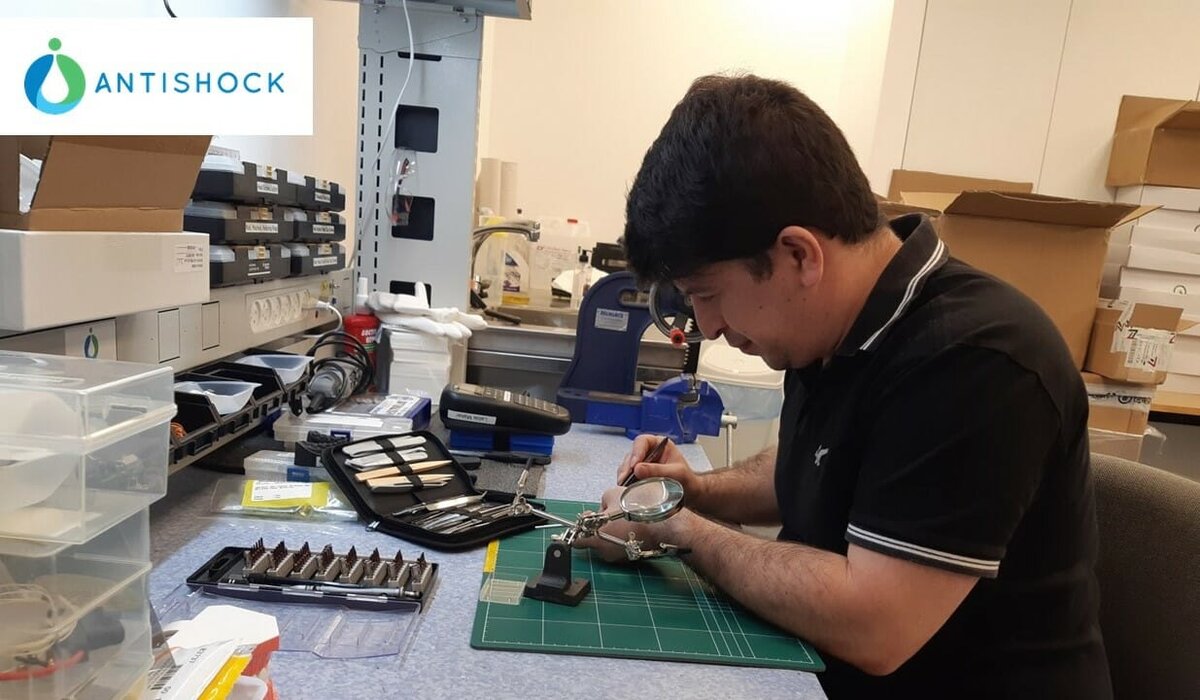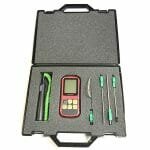Gil Lavi, Founder & CEO 3D Evaluate
The first time I heard the term “micro 3D printing” was a couple of years ago when I saw an image on LinkedIn presenting a tiny 3D printed part on a finger. “Incredible,” I thought to myself, “such a small part and so accurate with an amazing level of detail. But who needs micro parts and why? What are the possible applications for this type of technology, and what kind of challenges can it potentially solve?”
Last week I had the pleasure of gaining a better understanding of the uses of this technology after visiting a medical device start-up company that was facing an interesting challenge in their R&D process.
BEFORE MICRO 3D PRINTING
AntiShock, Haifa, Israel, is an innovative medical device start-up company that develops a disposable, non-invasive, continuous monitoring system that measures patients’ systemic fluid responsiveness (preventing intravenous [IV] fluid overload). Fluid overload is a common condition among intensive care unit (ICU) patients that not only has negative financial and clinical implications, but more importantly can cause organ failure, and — in severe cases — death.
To solve this challenge, AntiShock is developing a breakthrough electro-optical sensing medical device based on a tiny electro-optical sensor. This sensing device is built out of several small mechanical moving components that have to be strong and accurate. Therefore, to validate its product and produce a working prototype device, AntiShock had to locate and use advanced and accurate manufacturing technologies.

The threaded screw inside AntiShock’s medical device. (Image source: AntiShock Ltd.)
The two leading manufacturing technologies that were chosen were CNC and the stereolithography (SLA) 3D printing process that gave AntiShock the ability to create the first product mock-up. However, when moving to a more advanced stage in their R&D, the company confronted a very challenging task — it needed to produce a small dimension highly detailed component (about 1mm in diameter). SLA 3D printing could not provide the required levels of details and accuracy, and while CNC could, it was extremely expensive. R&D came to a hold, and new design solution was required.
MICRO 3D PRINTING
While searching for a solution to their problem, Dmitry Khalilov, co-founder and CTO of AntiShock came across Nanofabrica — the developer and manufacturer of an innovative and disruptive micro 3D printing system. Curious and intrigued, he made contact with Avi Cohen, Nanofabrica’s EVP sales, presenting the challenge and the company’s requirement to produce the small dimension / highly detailed component.
The challenge went beyond printing the component, there was also a need to print a small size thread (with a non-standard pitch) and fit a small screw on top of it, The components had to fit each other perfectly, and the 3D printed component had to be strong enough to sustain mechanical loads.
After reviewing the part’s size, geometry, thickness, and estimating the mechanical loads it had to withstand, Nanofabrica accepted the challenge and decided to print the part. After delivering a CAD file, it took only a few days before the Antishock R&D team has the 3D printed part in their hands! Excited and intrigued, they examined the part under a microscope to evaluate the levels of accuracy and to verify that the required details had been produced.
The results were beyond their expectations. The 3D printed part had passed their first qualification step! But would it fit the small metal screw? After carefully assembling the parts it was found to be a perfect fit!

Prefect fit! Image source: AntiShock Ltd
WHAT MADE MICRO 3D PRINTING SO VALUABLE?
After summarizing all the data and comparing the use of micro 3D printing to CNC and SLA, AntiShock came to the following conclusions that made clear what the advantages of using micro 3D printing in their R&D process are:
- Accuracy and details – first of all, it had the ability to provide the challenging levels of detail and accuracy required. 3D printing such a small part is not simple and definitely requires the use of a non-standard process.
- Geometry – micro 3D printing promotes design freedom, and so facilitated the production of this part (and future ones), without many of the limitations associated with more conventional production processes.
- Delivery time – the delivery time for a five 3D printed parts was one day. Using CNC, five parts would have taken between 3-4 days.
- Costs – producing a small dimension/ highly precise part via the CNC process would cost several hundreds of dollars, while using micro 3D printing it cost 80% less.
FINAL CONCLUSIONS
It took less than a week for AntiShock’s team to solve their problem using Nanofabrica’s micro 3D printing technology which they had never used before. The fact that micro 3D printing was able to produce the required part, opened up a wide choice of possibilities for the company for future R&D of its existing and still to be developed devices. Micro 3D printing was a perfect complementary technology to CNC and SLA 3D printing which were used for producing the bigger parts needed for the device.
On a personal level, after 16 years in the 3D printing industry, I was once again amazed to see how young entrepreneurs have developed a new and innovative technology that is once again reshaping the way things are made. Think small to make a big change.








